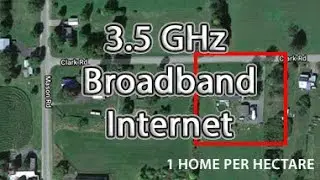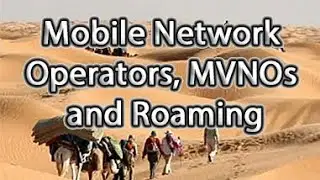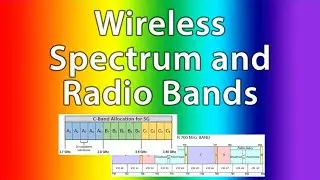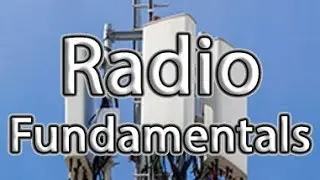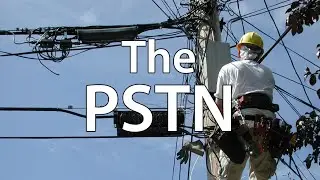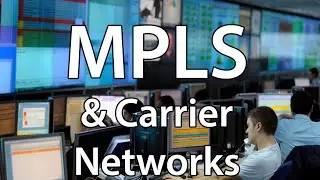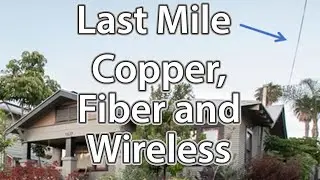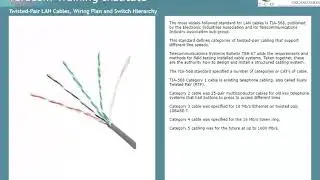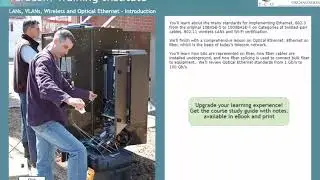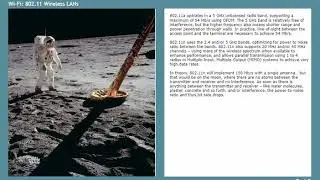TCP/IP over MPLS
Watch in full quality: https://www.teracomtraining.com/onlin...
CTNS Course L2114: MPLS and Carrier Networks
Lesson L1139 TCP/IP over MPLS
MPLS and Carrier Networks is a comprehensive training course designed to build a solid understanding of carrier packet networks and services, the terminology, technologies, configuration, operation and most importantly, the underlying ideas... in plain English.
This free online MPLS training course tutorial lesson is the seventh lesson in Teracom's Online Course "MPLS and Carrier Packet Networks".
MPLS and Carrier Packet Networks is the eighth course in the CTNS Certification Package, a set of eight courses plus Certified Telecommunications Network Specialist (CTNS) certification from the Telecommunications Certification Organization (TCO).
It is also the fourth course of the four-course "IP" package, the Certified IP Telecom Network Specialist (CIPTS) Certification Package.
In this lesson, we'll revisit the file download from server to client, this time over an MPLS network.
On completion of this lesson, you will be able to:
• Identify the devices involved in communication over a carrier MPLS network and the protocol stack on each
• Identify the protocol connections between the devices
• Trace the path of a file transfer through the protocols and devices,
• Identify and describe a significant advantage of MPLS-based network services compared to Frame Relay in the user-network interface, and
• Explain how the "M" in MPLS means MPLS can be used to carry frames for VPLS in addition to the usual IP packets.
The packet flow from server to client over an MPLS network is similar to the Frame Relay packet flow examined earlier -- with a major improvement on the user-network interface.
Starting with the server on the right, which is downloading a file to the client on the left, the file transfer software takes a segment of the file and gives it to the TCP software on the server, which starts a timer, puts a sequence number, error check and source and destination application port number in a TCP header on the file segment, and passes this to the IP software on the server.
The IP software on the server creates an IP packet by adding the IP header, populating the source address with its IP address and the destination address with the IP address of the client on the left.
The IP packet is passed to the layer 2 LAN driver software on the server, which puts the packet in an LAN MAC frame, populating the source address with its MAC address and the destination as the MAC address of the right-hand Customer Edge router.
The frame is then signaled one bit at a time over the LAN cable connecting the server to the LAN switch, which directs the frame to the right-hand CE router.
Layer 2 software on that right-hand CE router receives the MAC frame from the sever via the switch, performs the error check, verifies that its MAC address is the destination, then extracts the IP packet and passes it to the IP routing software on the CE router.
The IP routing software on the CE router decides that the Provider Edge router is the next hop, puts the packet in a MAC frame, populates the destination MAC address with that of the PE, recalculates the error check and signals the frame one bit at a time over the circuit to the service provider's Provider Edge, which is the ingress to the carrier's MPLS network.
The Provider Edge is the ingress Label Edge Router. It receives the IP packet in a MAC frame over the fiber access circuit. This ingress device examines the destination IP address on the packet and along with other factors, decides what Forwarding Equivalence Class the packet belongs to, then implements its decision by pushing a label onto the packet.
It then does a table lookup in its Incoming Label Map to get the Next Hop Label Forwarding Entry, determines what LSR that items with this label are forwarded to, and transmits the labelled packet in a frame to that LSR on the appropriate circuit.
Each LSR in the middle of the network (not shown) receives a frame, extracts the packet then only looks at the label and performs a table lookup to determine where to forward the packet and possibly what relative priority it has.
For more information see: https://www.teracomtraining.com/sampl...








